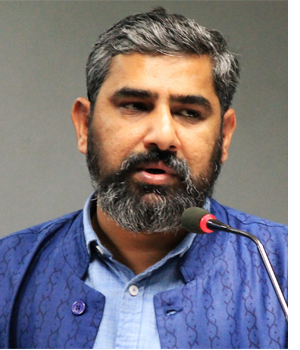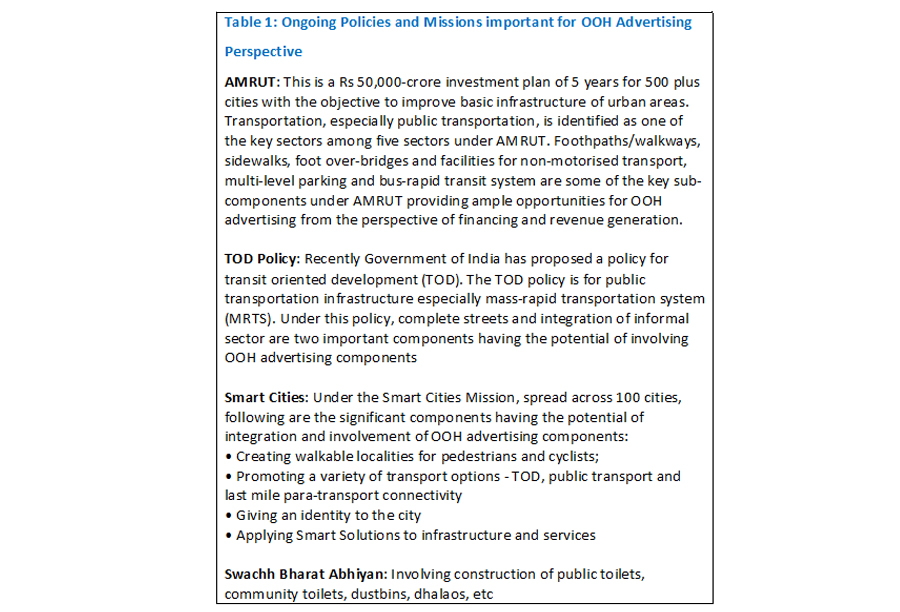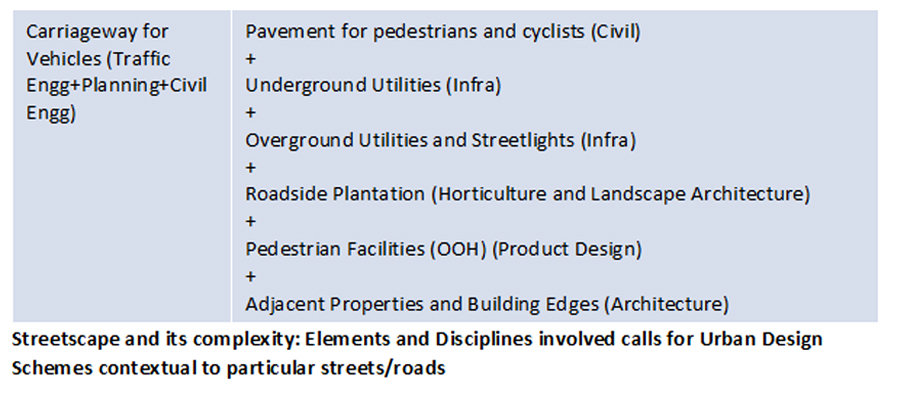‘OOH design must befit the streetscape’
By Manu Mahajan - January 22, 2018
OOH has the power to shape streetscape which reflect the vitality and character of an area, allowing for a complex interplay of various elements (below and above ground), and careful juxtoposition of these elements is going to result in memorable and unique streetscapes
 OOH advertising is advertising that reaches the consumer while they are outside their home and thus it focuses on marketing products and ideas to consumers when they are either moving in the city, in transit, waiting at specific locations and shopping for a while in a largely commercial area in the city. Billboards in public spaces (attached to buildings or free standing), street furniture such as bus stops, kiosks, public toilets, benches etc. and transit system (inside or outside a bus or train) are predominant locations or types of OOH advertising in India.
OOH advertising is advertising that reaches the consumer while they are outside their home and thus it focuses on marketing products and ideas to consumers when they are either moving in the city, in transit, waiting at specific locations and shopping for a while in a largely commercial area in the city. Billboards in public spaces (attached to buildings or free standing), street furniture such as bus stops, kiosks, public toilets, benches etc. and transit system (inside or outside a bus or train) are predominant locations or types of OOH advertising in India.
OOH growth in India has been significant since the early 2000s. From 2004-07, this segment showed a CAGR of 14% (PWC, 2008). In last one year, the segment has shown modest growth at 7% mainly due to demonetisation (KPMG, 2017) but in the near future the segment is expected to grow at a CAGR of 11.8% (KPMG, 2017). The expected growth s largely due to ongoing efforts in the urban arena by Central and state governments as well as from development of airports, railway and metro stations and industrial nodes.
Table 1 provides some of the key ongoing policies and projects of Government of India having direct impact on the OOH segment related to street furniture, billboards, etc. -- the segment that becomes part of streetscape of Indian cities. It is evident from Table 1 that streetscape components of OOH have a significant role to play in the near future as these missions and projects manifest in the physical urban space.

This article focuses on assessment of OOH components from the perspective of their contribution to the streetscape with the help of some of the cases in Delhi, a city that saw provisioning of OOH related street furniture during the Commonwealth Games (CWG) and most of the central locations/streets of Delhi got covered with OOH components such as benches, billboards, toilets, kiosks etc. This assessment is felt necessary at this stage for better integration of OOH related components in the projects/plans after mitigating any issue arising from the perspective of the city.
From the perspective of the city, OOH related components provide following:
• Necessary public amenities to public in transit and at public spaces
• Information dissemination to public about social issues
• Safety and security due to better lighting and activity along movement lines
• Revenue to municipal/state authorities
At the same time, OOH has been making two additional positive contributions,
• Specific image, character and identity to some parts of the city: Theoretical inputs to this aspect was first studied and compiled by Robert Venturi in his seminal book Learning from Lag Vegas (1977). This contribution of creating distinct identity by OOH components is quite important in the night life of the city- Piccadily Circus, London, Times Square, New York and Shibuya, Tokyo are some prime examples of this.

• Street life, chance encounter and vitality: OOH components result in some form of street level activity, especially the one related to small kiosks and thus contribute positively to the pedestrian movement along the footpaths in terms of safety.

Emerging issues from the perspective of city space(s) based on the study of OOH at selected places in Delhi is presented below:
• Visual clutter: In order to maximise the revenue, it is observed that important city streets/roads are planned (in fact planted) with excessive street furniture, especially the commercial kiosks. One important case is Lodhi Road, New Delhi wherein even the benches along with low height advertising panels were installed during CWG apart from number of kiosks and vertical advertising panels. Whether it was assumed that people would sit and enjoy heavy traffic or revenue maximisation along this important city road was the case; the picture of Lodhi road is one of visual clutter (saving grace are the old trees along the road).
• Appropriation of city spaces and key locations: This has led to visual undermining of these important locations with inappropriate OOH advertising infrastructure. One important case here is corner of Khan Market dotted with three toilet blocks, one of the most expensive commercial properties in the world and a popular market of Delhi.
• Standardisation vs specific city context: Despite an increase in manufacturing of signboards and kiosks, design does not show much evolution or variation and that one finds standardised templates in parts of the city. Instead of responding to local context, as well as space availability, these OOH components are somehow adjusted in the available space, compromising the character as well as movement of people in and around.
• Control and commercialisation of public space: One of the primary functions of streets/footpaths is to promote walkability for all kind of user groups. The OOH components are in conflict with this primary function of the streets. Commercial kiosks as part of OOH components starts controlling the public space and also leads to additions of more informal sectors around the kiosks.
In conclusion, for better integration of OOH components with the city and contribution of OOH in the improvement of streetscape in the ongoing projects, following is recommended:
• Perceive OOH advertising as an element interacting with the space around as against an “Object” in space. Change in this perception allows for incorporation of Urban Design also as against only Product Design in conception and installation of OOH elements
• Appropriate siting, size of media and location are important to achieve desirable quality (i.e. safety, convenience and aesthetics) of streetscape
• Addressing the local context, whether surrounding built form and functions or character, is desirable to achieve distinct streetscapes within a city
• There is a need to have an integrated approach to urban planning and urban design as against the present approach of engineering and infrastructure in provision of OOH advertising components on streets.
It is imperative that municipal corporations and agencies understand that some streetscapes in our cities are unique and OOH components need to respect that by allowing the fluidity in their design, sizes and placement. At the same time, OOH has the power to shape streetscape which reflect the vitality and character of an area, allowing for a complex interplay of various elements (below and above ground), and careful juxtoposition of these elements is going to result in memorable and unique streetscapes.
Table 2: Road Elements / Streetscape Element

About the author:
Manu Mahajan is Assistant Professor of Urban Design at School of Planning and Architecture (SPA), New Delhi. He has dual master’s degree in Urban Design from SPA and Urban Economic Development from DPU, Bartlett Faculty of Built Environment, University College London, where he was a Commonwealth Scholar.

Stay on top of OOH media trends








